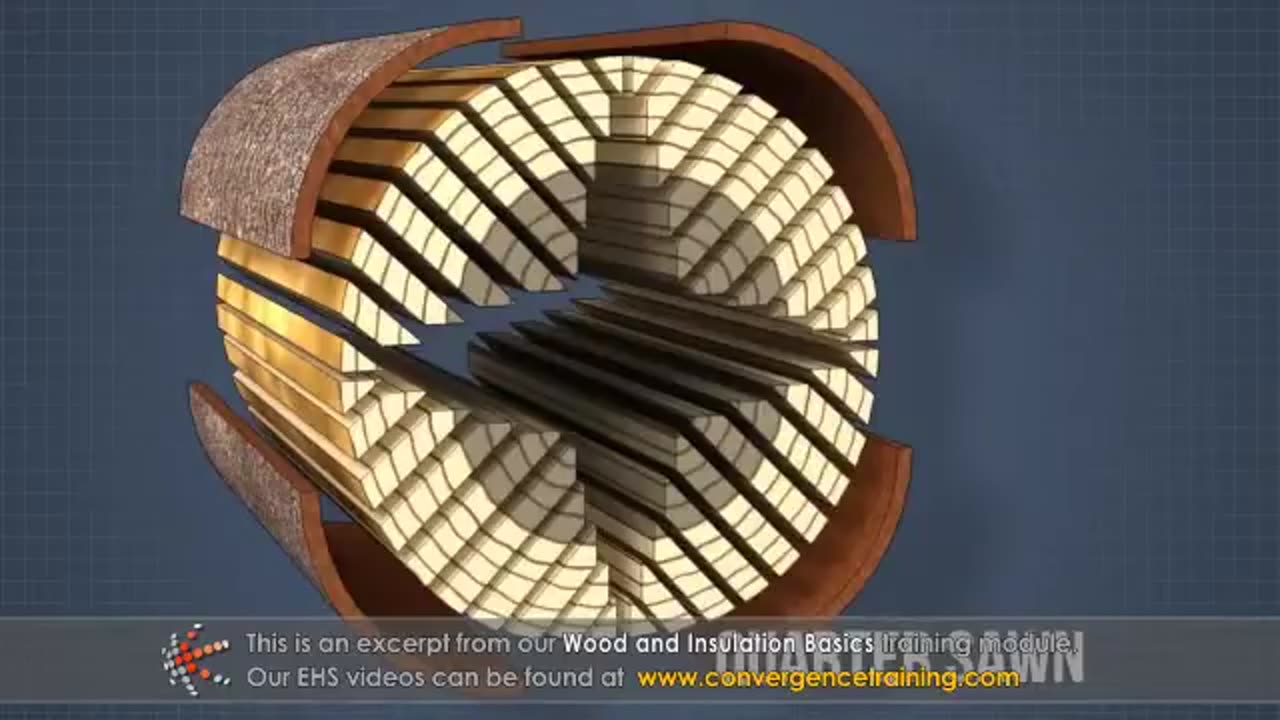Premium Only Content

Wood and Insulation Basics
### **Wood and Insulation Basics**
Wood and insulation are essential materials in construction, each serving unique purposes in building structures. Understanding their properties, types, and applications helps ensure a durable, energy-efficient, and comfortable building.
---
### **Wood Basics**
#### **Properties of Wood**
1. **Natural Material**:
- Sourced from trees, wood is sustainable and renewable.
2. **Strength and Durability**:
- High strength-to-weight ratio; durability depends on species and treatment.
3. **Thermal Insulation**:
- Offers moderate insulation due to its natural cellular structure.
4. **Workability**:
- Easy to cut, shape, and join.
5. **Aesthetic Appeal**:
- Offers warmth and a natural look, enhancing architectural design.
#### **Types of Wood**
1. **Hardwoods**:
- Sourced from deciduous trees (e.g., oak, maple, cherry).
- Dense, durable, and suitable for flooring, furniture, and high-traffic areas.
2. **Softwoods**:
- From coniferous trees (e.g., pine, spruce, cedar).
- Lightweight, easier to work with, and widely used in framing and paneling.
#### **Wood Treatments**
1. **Pressure-Treated Wood**:
- Infused with chemicals to resist decay, insects, and moisture.
- Ideal for outdoor use (e.g., decks, fences).
2. **Kiln-Dried Wood**:
- Dried in a kiln to reduce moisture, preventing warping or shrinking.
3. **Laminated/Engineered Wood**:
- Made by bonding layers of wood or wood fibers (e.g., plywood, MDF).
- Stable and versatile for structural and decorative uses.
#### **Applications of Wood**
1. **Structural**:
- Beams, joists, and studs in building frames.
2. **Finish**:
- Doors, windows, trim, and cabinetry.
3. **Outdoor**:
- Decking, pergolas, and landscaping features.
---
### **Insulation Basics**
#### **Purpose of Insulation**
1. **Thermal Resistance**:
- Reduces heat transfer, maintaining comfortable indoor temperatures.
2. **Energy Efficiency**:
- Decreases energy costs by reducing heating and cooling needs.
3. **Soundproofing**:
- Dampens sound between walls, floors, and ceilings.
#### **Types of Insulation Materials**
1. **Fiberglass**:
- Made of fine glass fibers; available in batts, rolls, and loose-fill.
- Affordable, fire-resistant, and widely used.
2. **Mineral Wool**:
- Derived from natural or recycled stone/slag.
- Offers excellent fire resistance and soundproofing.
3. **Foam Board (Rigid Foam)**:
- Made from polystyrene or polyurethane.
- High R-value per inch, ideal for walls, roofs, and foundations.
4. **Spray Foam**:
- Expands upon application to seal gaps and cracks.
- Provides excellent air sealing and insulation.
5. **Cellulose**:
- Made from recycled paper products treated for fire resistance.
- Used in walls and attics as loose-fill insulation.
6. **Natural Insulation**:
- Materials like wool, cork, or hemp; eco-friendly options.
#### **Insulation Ratings**
- **R-Value**: Measures thermal resistance; higher values mean better insulation.
- Example: R-38 is typically recommended for attics in colder climates.
#### **Placement of Insulation**
1. **Walls**:
- Between studs to prevent heat loss/gain.
2. **Attics**:
- Helps reduce heat escape in winter and heat intrusion in summer.
3. **Floors**:
- Minimizes heat loss to unheated spaces like basements or crawl spaces.
---
### **Wood and Insulation Together**
Wood framing and insulation often work together to create an energy-efficient and structurally sound building. Key considerations include:
1. **Moisture Control**:
- Ensure insulation is compatible with wood to prevent moisture accumulation and rot.
2. **Thermal Bridging**:
- Minimize heat transfer through wood studs by adding rigid foam insulation.
3. **Fire Safety**:
- Use fire-retardant treatments or materials in areas where insulation and wood are close.
---
### **Tips for Choosing and Using Wood and Insulation**
1. **For Wood**:
- Select the right species and treatment for the application.
- Protect against moisture with proper sealing or treatments.
2. **For Insulation**:
- Choose the insulation type based on climate, budget, and installation location.
- Seal gaps and cracks to prevent air leaks.
3. **Combination**:
- Ensure proper ventilation to avoid trapping moisture within wood-framed structures.
---
Let me know if you'd like more details about a specific type of wood or insulation material! 😊
-
 6:54
6:54
HSESafetyInformation
8 months ago6 Must Try Breakfast recipes By Food Fusion
371 -
 1:07:25
1:07:25
Timcast
3 hours agoBomb DETONATED At Harvard, Attacks On Ice Agents SKYROCKET
149K131 -
 1:55:31
1:55:31
Steven Crowder
5 hours agoTucker Carlson & MAGA: Everyone is Missing the Point
377K303 -
 1:11:22
1:11:22
The Rubin Report
4 hours agoWatch Joe Rogan’s Face as Elon Musk Exposes How Dems Are Cheating in Plain Sight
62.1K83 -
 1:01:07
1:01:07
VINCE
6 hours agoThe Walls Are Closing In On The Deep State | Episode 160 - 11/03/25
245K152 -
 LIVE
LIVE
LFA TV
21 hours agoLIVE & BREAKING NEWS! | MONDAY 11/3/25
1,860 watching -
 1:31:18
1:31:18
Graham Allen
7 hours agoErika Fights Back: Vows To EXPOSE TRUTH & DEMANDS Trial Goes Public!! Left Says Her Grief Is FAKE!
159K87 -
 2:08:47
2:08:47
Badlands Media
11 hours agoBadlands Daily: November 3, 2025 – Tariff Wars, SNAP Panic & Brennan Gets Confronted
78.9K21 -
 2:59:32
2:59:32
Wendy Bell Radio
10 hours agoThings Will Get Worse Before They Get Better
101K118 -
 1:18:28
1:18:28
The Big Mig™
6 hours agoICE Will Use Private Bounty Hunters, LFG
42.4K13